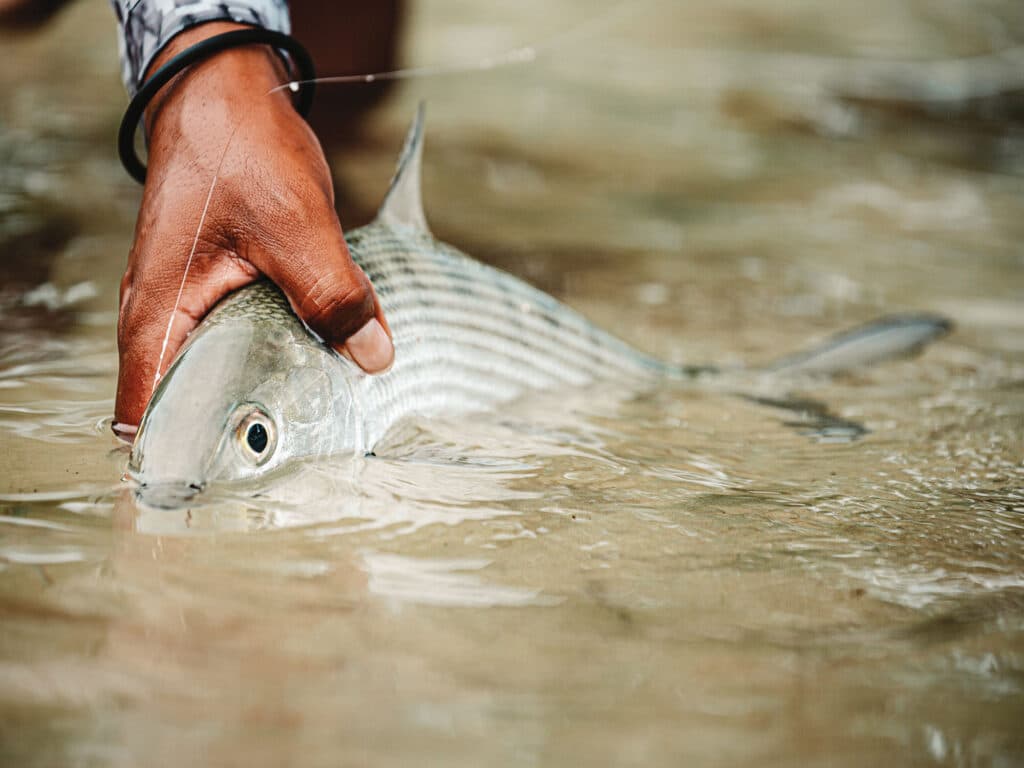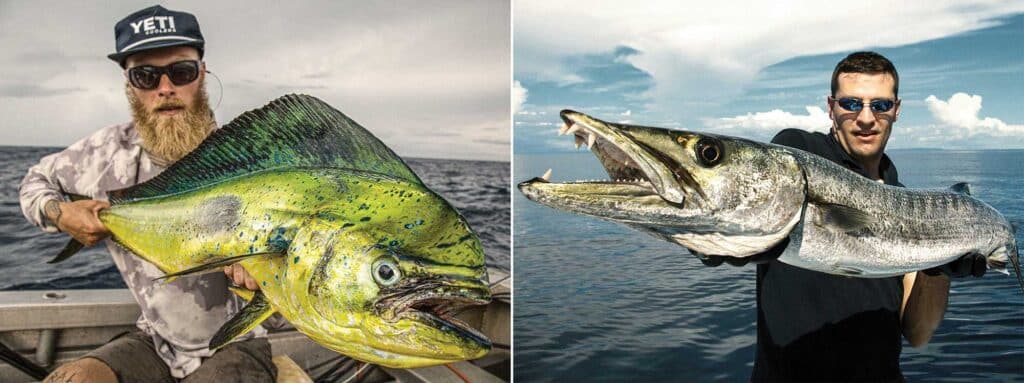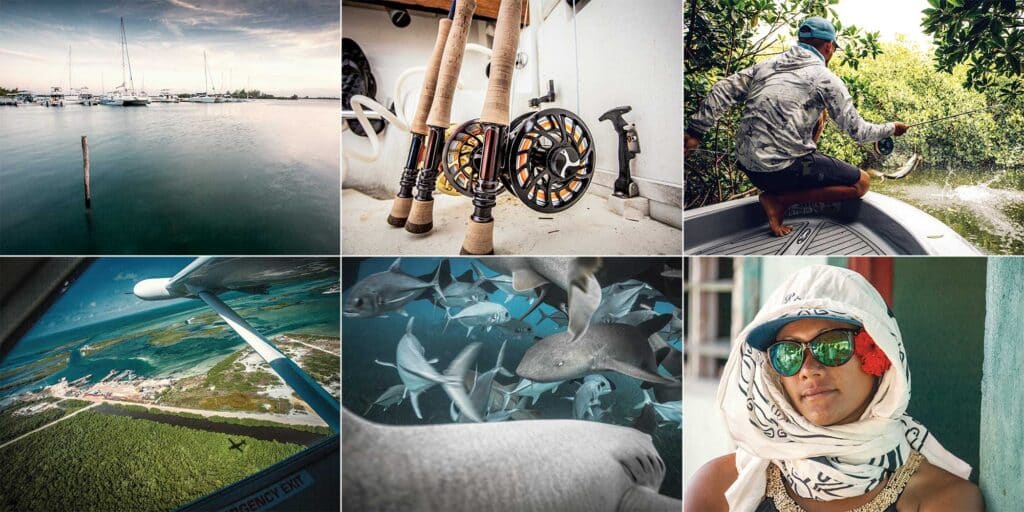
It’s safe to say we’re in the age of the digital photograph. From iPhones to high-end DSLR cameras, nearly everyone has the ability to easily capture an image on the water and almost instantly post it for others to see. In a world where social media has transitioned from a way to share personal stories with friends to a mode of business for guides, lodges, “influencers” and more, we’re suddenly confronted with an increased load of images shoved in our faces daily.
There are pros and cons to the digital age and social media. Sure, it’s a great way to stay in touch with friends and connect with fishermen around the world. It’s a place to eyeball destinations and plan future trips. Information is more accessible than ever before, which also means bad info—and bad images—are just as accessible as the good. Fortunately, there are some simple steps to ensure your photos stay on the tasteful side of things.

Pet Peeves of a Pro
I’ve spent the past 15 years as a professional photographer, largely in the fishing and travel industries. Working across six continents (still looking for an angle for Antarctica), I’ve watched different anglers shoot thousands of images while also shooting my own. And while I’m immensely grateful for the connections social media has fostered over the years, I’ve got some pet peeves with it as well.
First is the hero shot. You know the one—an angler smiling beatifically at a dry fish, holding it up toward the camera. We’ve all seen it, and it’s fine. But that pose is a bit overused.
Don’t try to emulate every other fish pic on Instagram. Your images should look like your own work, not someone else’s. This is why I’m not a fan of learning photography in a school setting. If 10 images are printed in a magazine spread, ideally yours will have some sort of trademark look that lets readers know who shot it without looking at the photo credit. Find your style and own it mercilessly.
Taking shots from eye level. This is the view that 99 percent of the population sees all the time. Mix it up a little. Squat down. Drop to your belly. Climb a tree. Climb to a second-floor balcony. Changing perspective is an easy way to change the lines of an image.
Photos where the fish’s eye is out of focus. You know that hero shot we talked about? Keep your camera focused on the fish’s eye, not the angler’s face. The same holds for any shot with a fish. Draw focus on the fish’s eyeball and keep it tack-sharp. Tarpon are fun for this because their eye is huge.
Monkeying for the camera or trying too hard to be cool. If that’s who you are, awesome. Cheers. But don’t play it up to the point of being comical. It’s not a good look.
Burying cameras in bags to “keep them safe” and never using them. It’s hard to get a good photo if the camera is never out. Gear is meant to be used; if it breaks or gets wet, it just means you were using it. Be bold.
The same shots over and over again. Flip through Instagram, and odds are you’ll see a lot of similar-looking fishing photos. Get creative. Shoot the weird, little fun moments when you’re fishing with friends. They make the best, most relatable images. Do something different.
Trends I Wish Would Disappear
Pet peeves are one thing, but there are a few trends in fishing photography that we could do away with entirely. This is my own list, so feel free to disagree—I’m sure some of you will. And I’m sure you have some of your own to add as well.
Long-arming fish. It’s OK to do it—hey, do whatever makes you happy—but don’t pretend you’re not. Be honest.
Hold your own fish. Skip the photos if you don’t catch anything. I’ve been to several photo shoots with Instagram celebrity “anglers” who are used to holding fish other people catch. They may have 100,000-plus social media followers, but they bill themselves as professional guides when they can’t cast 30 feet. Yes, they also hold fish that other people catch in pictures. Again, be honest.
Blowing up spots. Instagram encourages us to geolocate. Please, try to resist the urge. Go ahead and tag generally by state or region. Some folks will call out certain spots in the comments. There’s not much you can do about that. But let’s do what we can to keep good spots good.
Read Next: Three Great Cameras to Improve Your Fishing Photos

Tips for Pro-Approved Photos
OK, the rant is over. Grab your camera and get on the water. Go do what you love. Here are a few of my top tips for anyone looking to better their basic fishing photography, whether with a phone camera or a new $10,000 DSLR rig.
Plan to either fish or shoot. It’s possible to do both, but often not to the best of our ability or enjoyment. Sometimes I leave the camera at home and just enjoy the fishing. It’s important.
When handling fish, keep them wet. If needed, remind the angler to wet their hands. This makes for better images and increases the odds that released fish will live to be caught again. Have the angler keep the fish in the water while you talk through the angle and position you want for the shot. Countdown from three, then have the angler lift the fish. You’ll capture cascading droplets of water coming off the fish, making for a much more interesting photo.
Hold the fish right, keeping fingers out of the frame. (Ideally, curl them under the fish’s belly.) Ensure the angler grasps the tail from the back so a hand isn’t blocking it for the image. Go ahead and tip the fish’s nose toward the camera and hold it out a bit—but don’t pretend you’re not making the fish look bigger. This position can show off the fish’s best angles, but don’t stick it out too far in an effort to gain inches. It’s transparent and looks like you’re trying to tell a big fish story.
If possible, get in the water with the fish. It’s more fun for the angler and the photographer, and you’ll find the composition dynamic changes when you’re on their turf. (Remember that note about shooting from eye level?) Move your feet. Get a new angle. Plus, this will help avoid bringing larger fish you plan to release into the boat.
Snap a few shots, then get the fish back in the water. Repeat if needed, always keeping the fish in the water in between shots. Then let the fish swim off, and don’t forget to get the release shot. It can be the best image of the day, catching the expression on the angler’s face as they watch their fish swim off.
Don’t forget to take a few with the angler looking at the fish, sunglasses off and hat pushed back away from their face. This’ll give you the classic “I caught a big fish, look at me” image. I like to shoot a few with the angler interacting with the camera as well. Change it up. Do it right and this can be pretty tasteful.
Be mindful of humidity. If you’ve had your camera in an air-conditioned room or truck, plan some time to let it equilibrate to the outside humidity. Let it sit on the table, lens cap off, while you get your coffee and chat with friends.
Make sure you take good care of your gear. You don’t need the fanciest kit, but take care of whatever you have. Salt air is not electronics’ best friend, and a careful wipe with a damp washcloth at the end of each day will go a long way. It’s a tool, but treat it nicely.
Fishing should be fun. There’s no reason to take any of this too seriously. Camera or rod in hand, go enjoy yourself and make a few memories that are so awesome, you’ll want pictures to remember them. I hope to see some of your (tasteful) images on the net.









